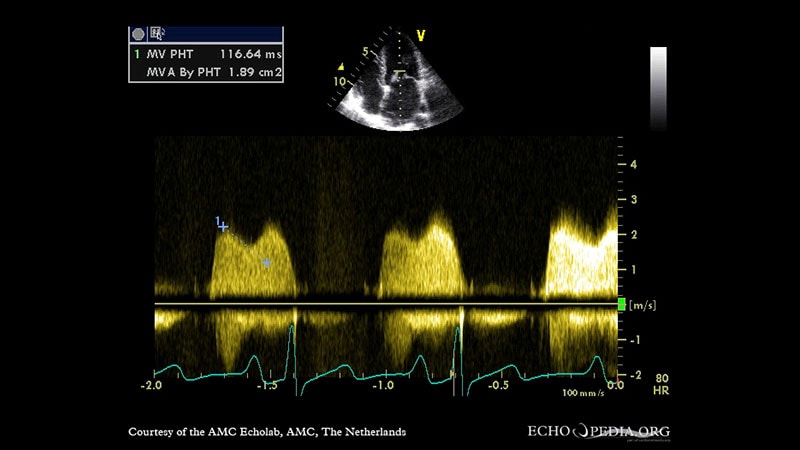Intravascular Lithotripsy for Mitral Valve Stenosis: A Promising Treatment Approach
Core Concepts
Intravascular lithotripsy shows promise in treating severe calcific mitral stenosis.
Abstract
The content discusses the use of intravascular lithotripsy-facilitated percutaneous balloon mitral valvuloplasty (IVL-PBMV) as a novel technology for treating severe calcific mitral stenosis. Key points include:
Introduction of IVL-PBMV for patients with no other treatment options.
Case series at Henry Ford Health for patients with severe mitral annular calcification.
Use of Shockwave balloons for calcification in mitral valve disease.
Observations of improved pliability post-treatment.
Use of Sentinel device for cerebral protection during the procedure.
Safety and effectiveness outcomes of IVL-PBMV.
Need for larger prospective studies to validate the procedure.
Expert opinions on the potential of IVL-PBMV in treating severe calcific MS.
Lithotripsy for Mitral Valve Stenosis: What's the Promise?
Stats
"The procedure is not usually performed in older patients with severe MS because of the risk of causing severe mitral valve (MV) regurgitation."
"One patient had a residual MV mean gradient > 10 mm Hg, and seven had a mean gradient > 5 mm Hg."
"One patient experienced worsening mitral regurgitation from baseline."
Quotes
"This is an extremely challenging group of patients to treat, so any advancement or new option in our armamentarium is important." - Pedro Engel-Gonzalez, MD
"PBMV appears promising and helped achieve an average reduction in transmitral valve gradient of > 5 mm Hg, which is clinically meaningful." - Hani Jneid, MD
Key Insights Distilled From
by Marilynn Lar... at www.medscape.com 03-06-2024
https://www.medscape.com/viewarticle/lithotripsy-mitral-valve-stenosis-whats-promise-2024a10004ad
Deeper Inquiries
How does IVL-PBMV compare to other treatment options for severe calcific mitral stenosis?
In comparison to other treatment options for severe calcific mitral stenosis, IVL-PBMV offers a novel approach that shows promise for patients who have limited surgical or transcatheter treatment options. Traditional percutaneous mitral balloon valvuloplasty is not typically performed in older patients with severe mitral stenosis due to the risk of causing severe mitral valve regurgitation. IVL-PBMV, on the other hand, utilizes Shockwave balloons to address calcification in mitral valve disease. This technology breaks up calcium in the cardiovascular system by causing acoustic disruptions in the calcium it comes in contact with when inflated. The use of the intravascular lithotripsy system has shown effective reduction in mitral valve gradients and improved pliability, potentially mitigating the risk of severe mitral regurgitation.
What are the potential risks associated with IVL-PBMV that need further investigation?
While IVL-PBMV has shown promise in treating severe calcific mitral stenosis, there are potential risks associated with the procedure that require further investigation. Complications reported in the case series include worsening mitral regurgitation, intraprocedural major complications such as right ventricular perforation requiring urgent extracorporeal membrane oxygenation and surgical repair, late pericardial effusion requiring pericardiocentesis, and development of complete heart block necessitating implantation of a permanent pacemaker. Additionally, there was a case of periprocedural stroke due to calcium embolizing to the brain. These risks highlight the importance of ongoing research to better understand the safety profile of IVL-PBMV and identify strategies to mitigate potential complications.
How can the collaboration with other centers enhance the understanding of IVL-PBMV's efficacy and safety?
Collaboration with other centers can significantly enhance the understanding of IVL-PBMV's efficacy and safety by allowing for the validation of results across different patient populations and operator experiences. By creating a multicenter registry and conducting larger prospective studies, researchers can gather more robust data on the outcomes of IVL-PBMV in treating severe calcific mitral stenosis. This collaborative effort can help to better characterize the efficacy, durability, and safety of the procedure, providing valuable insights into its long-term impact on patients. Furthermore, collaboration with device companies to develop dedicated IVL balloons for valvuloplasty procedures can lead to advancements in technology that further improve the safety and effectiveness of IVL-PBMV.
0
